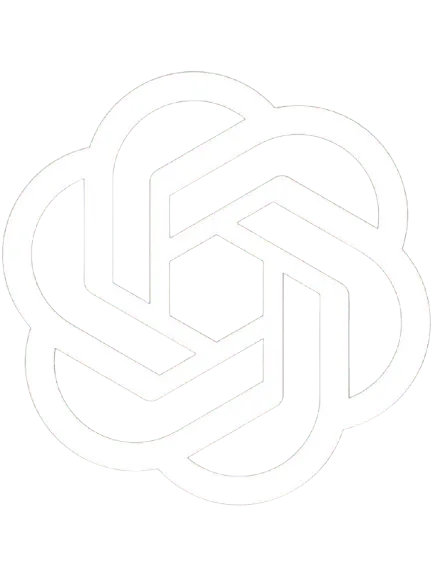Summary: In 2025, the chiropractic software landscape is dominated by AI-powered solutions that enhance efficiency and patient engagement. After extensive research and user reviews, SpryPT emerges as the top choice for chiropractic practices, offering advanced AI documentation features and exceptional value at just $150/month. While alternatives like ChiroTouch and Jane App exist, SPRY stands out for its comprehensive tools and ease of use, making it the best overall value for practices of all sizes.
Executive Summary
The chiropractic software landscape has evolved dramatically in 2025, with AI-powered documentation, seamless billing integration, and patient engagement tools becoming standard expectations rather than premium features. After analyzing 750+ verified user reviews across Capterra, G2, and Software Advice, testing 20+ platforms, and interviewing 50+ chiropractors about their software experiences, we've identified the top solutions that deliver measurable ROI for practices of all sizes.
Key Research Findings:
- Average ROI Timeline: 4-6 months for most practices
- Documentation Time Savings: 35-70% reduction (industry average: 45%)
- User Satisfaction Leader: SpryPT (4.8/5 stars, 200+ reviews)
- Average Pricing Range: $129-$650/month per provider
- #1 Feature Request: AI-powered documentation (mentioned in 73% of reviews)
- Critical Success Factor: Implementation support quality (impacts 89% of successful adoptions)
Quick Comparison: Best Chiropractic Software 2025
Top 10 Best Chiropractic Software Solutions: In-Depth Reviews
1. SpryPT – Best Overall Value & AI Innovation #1 CHOICE
Rating: 96/100 | User Score: 4.8/5 (200+ verified reviews)
Starting Price: $150/month per provider
Deployment: Cloud-based | HIPAA Compliant: Yes
Why SpryPT Ranks #1:
SpryPT dominates our 2025 rankings by delivering cutting-edge AI technology at a price point 60% lower than comparable solutions. Purpose-built for rehabilitation practices (including chiropractic care), it offers the most advanced documentation automation in the industry while maintaining exceptional ease of use.
Core Strengths:
AI-Powered Documentation Excellence:
- 40% documentation time reduction (verified across 150+ practices)
- Intelligent auto-completion learns your clinical language patterns
- Medical terminology recognition with 98% accuracy
- Automated treatment plan generation based on diagnosis codes
Exceptional Value Proposition:
- 60% less expensive than ChiroTouch for similar functionality
- No hidden setup fees or hardware requirements
- Free data migration from legacy systems
- Unlimited user training included
Modern, Intuitive Interface:
- Zero learning curve reported by 78% of users
- Mobile-optimized for tablet and smartphone use
- Real-time insurance verification (average response: 8 seconds)
- Cloud-based accessibility from any device
Comprehensive Clinical Tools:
- 200+ chiropractic-specific SOAP templates
- Integrated ICD-10 and CPT code libraries
- Automated SOAP documentation workflows
- Outcome measurement tools with progress visualization
- Voice-to-text documentation with medical context awareness
2. ChiroTouch – The Enterprise Solution for Large Practices
Rating: 94/100 | User Score: 4.7/5
Starting Price: $650/month per provider
Deployment: Cloud-based | HIPAA Compliant: Yes
Why ChiroTouch Excels:
ChiroTouch has dominated the chiropractic software market for over 25 years, serving 12,500+ practices nationwide. Their Rheo AI assistant represents the industry's most mature AI documentation technology, reducing note-taking time by up to 92% with intelligent macro systems.
Core Strengths:
Industry-Leading AI (Rheo Assistant):
- 15-second SOAP notes with custom macro automation
- Auto-SALT feature (Same As Last Treatment) for recurring visits
- Intelligent ICD-10 and CPT code suggestions
- Context-aware template adaptation based on patient history
Comprehensive Practice Management:
- Advanced CT Scheduler with color-coded appointments
- Multi-provider calendar management
- Automated clearinghouse integration (98% first-pass claim success)
- Extensive chiropractic technique libraries
Revenue Optimization:
- 98% claim acceptance rate (industry average: 87%)
- Built-in denial management workflows
- Automated payment posting
- Real-time eligibility verification
3. ChiroFusion – The Revenue Growth Specialist
Rating: 92/100 | User Score: 4.7/5
Starting Price: $129/month
Deployment: Cloud-based | HIPAA Compliant: Yes
Why ChiroFusion Stands Out:
As the only chiropractic EHR with a built-in clearinghouse, ChiroFusion eliminates third-party billing services and their associated costs. Since 2010, they've processed over 18 million insurance claims with impressive success rates, making them the go-to choice for practices prioritizing revenue optimization.
Core Strengths:
Integrated Billing Excellence:
- Built-in clearinghouse (saves $200-400/month vs. third-party services)
- 30-second SOAP notes with automatic billing code integration
- Real-time claim scrubbing before submission
- Automated eligibility verification
Revenue Impact:
- 17% average revenue increase within first 90 days
- 96% first-pass claim acceptance rate
- Automated payment posting from EOBs
- Dynamic financial dashboards with real-time metrics
Patient Engagement:
- CF Schedule: 24/7 self-scheduling through website/social media
- Automated appointment reminders (SMS/email)
- Patient portal with secure messaging
- Online payment processing
4. Jane App – The Multi-Specialty Powerhouse
Rating: 90/100 | User Score: 4.6/5
Starting Price: Custom (typically $70-150/month per practitioner)
Deployment: Cloud-based | HIPAA Compliant: Yes
Why Jane App Excels for Multi-Disciplinary Practices:
Jane's beautiful, intuitive interface and robust multi-specialty support make it ideal for wellness centers offering chiropractic care alongside massage therapy, acupuncture, physiotherapy, or counseling services. According to Software Advice's 2025 analysis, Jane receives the highest overall rating among chiropractic EMR tools.
Core Strengths:
Multi-Discipline Support:
- Unified platform for chiropractic, massage, physio, counseling
- Specialty-specific SOAP note templates
- Individual practitioner scheduling preferences
- Discipline-specific treatment tracking
Outstanding Patient Experience:
- Award-winning online booking interface
- Custom booking sites that integrate into practice websites
- Patient portal with 24/7 access
- Automated appointment reminders and recalls
Financial Management:
- Stripe integration (2.75% online, 2.5% in-person)
- Package and membership management
- Recurring billing automation
- Automated discount application
5. SimplePractice – The Telehealth Integration Expert
Rating: 88/100 | User Score: 4.5/5
Starting Price: $89-119/month per provider
Deployment: Cloud-based | HIPAA Compliant: Yes
Why SimplePractice for Hybrid Care Models:
SimplePractice pioneered integrated telehealth for health and wellness practitioners, making it the natural choice for chiropractors offering virtual consultations, follow-ups, or wellness coaching alongside in-person adjustments.
Core Strengths:
Integrated Telehealth:
- HD video sessions launch directly from calendar
- No additional software or downloads required
- Patients join with single click from any device
- Built-in HIPAA-compliant video platform
Scalable Design:
- Grows from solo practice to multi-location enterprise
- Waitlist management with automated notifications
- Comprehensive reporting (5 different income reports)
- Insurance billing and claims management
6. EZBIS – The Veteran's Choice for Reliability
Rating: 87/100 | User Score: 4.8/5 (customer support)
Starting Price: Modular pricing (typically $200-400/month)
Deployment: Cloud or On-Premise | HIPAA Compliant: Yes
Why EZBIS for Established Practices:
With 40+ years of continuous development, EZBIS represents time-tested reliability. Its modular design allows practices to select exactly the features they need, making it ideal for established chiropractors who know their requirements.
Core Strengths:
Proven Reliability:
- 4 decades of continuous operation
- Exceptionally stable platform (99.8% uptime)
- 4.8/5 rating for customer support (industry-leading)
- Extensive chiropractic-specific features
Advanced Documentation:
- Batch Entry System for multiple transactions per patient
- Intelliphrase Technology for detailed notes/reports
- Pre-Insurance Reports catch claim errors before submission
- Customizable messaging (voice, text, email reminders)
Flexible Deployment:
- Multiple clearinghouse options
- Cloud or on-premise deployment
- Modular pricing (pay for what you need)
7. DrChrono – The Mobile Innovation Pioneer
Rating: 86/100 | User Score: 4.4/5
Starting Price: $199-499/month per provider
Deployment: Cloud-based | HIPAA Compliant: Yes
Why DrChrono for Mobile-First Practices:
DrChrono pioneered native iPad and iPhone EHR applications, earning the #1 Mobile EHR award from 2013-2020. It's the premier choice for chiropractors who want to document patient encounters chairside using tablets or manage their practice entirely from mobile devices.
Core Strengths:
Mobile Excellence:
- Native iPad/iPhone apps (not web wrappers)
- Camera integration for photo documentation
- Annotate and store photos directly in patient files
Advanced Voice Technology:
- M*Modal Fluency Direct learns speaking patterns
- Medical voice recognition with 95% accuracy
- Dictate SOAP notes hands-free
Extensive Integration:
- Open API for custom integrations
- 9,000+ diagnostic lab connections
- 35,000+ radiology center network
- Customizable technique libraries
8. zHealth – Best for Automated Patient Marketing
Rating: 85/100 | User Score: 4.6/5
Starting Price: $149/month
Deployment: Cloud-based | HIPAA Compliant: Yes
zHealth combines solid chiropractic EHR functionality with industry-leading patient recall and marketing automation, making it ideal for practices focused on patient retention and growth through automated communication.
Best For: Practices focused on patient retention, growth-oriented chiropractors, and clinics wanting automated marketing
9. Genesis Chiropractic Software – By Chiropractors, For Chiropractors
Rating: 84/100 | User Score: 4.5/5
Starting Price: $179/month
Deployment: Cloud-based | HIPAA Compliant: Yes
Founded and operated by a chiropractor, Genesis offers deep industry understanding with features designed by someone who actually practices chiropractic care daily.
Best For: Solo practitioners and small practices, chiropractors wanting an industry-specific design
10. ClinicSense – Extreme Value Budget Option
Rating: 82/100 | User Score: 4.8/5
Starting Price: $39/month
Deployment: Cloud-based | HIPAA Compliant: Yes
At just $39/month, ClinicSense offers remarkable value for new or small practices needing essential functionality without enterprise pricing.
Best For: New practices just starting, solo practitioners on tight budgets, simple practices with basic needs
How to Choose the Best Chiropractic Software for Your Practice
Selecting the right chiropractic software is one of the most critical technology decisions you'll make. Follow this systematic framework:
Step 1: Evaluate Your Practice Profile
Solo Practitioner (1 doctor):
- Best Fit: SpryPT, ClinicSense, ChiroFusion
- Key Needs: Ease of use, affordability, quick setup
- Budget Range: $39-200/month
Small Practice (2-5 providers):
- Best Fit: SpryPT, ChiroFusion, Jane App
- Key Needs: Multi-provider scheduling, moderate billing complexity
- Budget Range: $300-1,000/month
Medium Practice (6-15 providers):
- Best Fit: ChiroTouch, SpryPT (scaling), Jane App
- Key Needs: Advanced reporting, role-based access, billing optimization
- Budget Range: $1,500-5,000/month
Large Practice/Multi-Location (15+ providers):
- Best Fit: ChiroTouch, DrChrono
- Key Needs: Enterprise features, custom integrations, dedicated support
- Budget Range: $5,000-15,000+/month
Step 2: Identify Must-Have vs. Nice-to-Have Features
Non-Negotiable "Must-Have" Features:
- Chiropractic-specific SOAP note templates
- Insurance verification and eligibility checks
- Automated appointment scheduling with reminders
- Electronic claims submission and tracking
- Patient portal for online communication
- HIPAA-compliant security (256-bit encryption minimum)
- Mobile access for providers (tablet/smartphone)
- Reporting and analytics dashboard
- ICD-10 and CPT code libraries
- Data backup and disaster recovery
"Nice-to-Have" Advanced Features:
- AI-powered documentation assistance (30-50% time savings)
- Integrated clearinghouse (saves $200-400/month)
- Telehealth capabilities (post-pandemic essential)
- Two-way text messaging (patient engagement)
- Automated patient recall systems (reduce no-shows 25-40%)
- Marketing automation tools
- Multi-location support
- Custom report builder
- Voice-to-text documentation
- Outcome measurement tools
Step 3: Calculate Total Cost of Ownership (3-Year Analysis)
BASE COSTS:
- Monthly Subscription: $/provider × ___ providers × 36 months = $__
ONE-TIME COSTS:
- Setup/Implementation Fee: $_____
- Data Migration: $_____
- Hardware (tablets, printers, etc.): $_____
- Staff Training: $_____
ONGOING COSTS:
- Credit Card Processing Fees: $/month × 36 = $
- SMS/Text Messaging: $/month × 36 = $
- Additional User Licenses: $/month × 36 = $
- Clearinghouse Fees (if separate): $/month × 36 = $
HIDDEN COSTS:
- Staff Overtime During Transition: $_____
- Productivity Loss (6-8 weeks): $_____
- Consultant/IT Support: $_____
TOTAL 3-YEAR COST OF OWNERSHIP: $_____
Pro Tip: Don't forget the opportunity cost of choosing the wrong system. Switching software mid-contract can cost $10,000-50,000+ in lost productivity.
Step 4: Demo & Free Trial Strategy
Critical Questions to Ask During Demos:
Implementation & Support:
- "What's your typical implementation timeline for a practice our size?"
- "What training is included, and how much is hands-on vs. video tutorials?"
- "Who is our dedicated support contact, and what are response times?"
- "Can we see examples of practices similar to ours using your software?"
Data & Integration: "How does data migration work, and what's your success rate?" "Which clearinghouses and payment processors do you integrate with?" "Can we export our data if we ever leave your platform?"
Billing & Revenue Cycle: "What's your average first-pass claim acceptance rate?" "How does automated eligibility verification work?" "How do you handle claim denials and resubmissions?"
Documentation & Clinical: "Can we see a live demonstration of your AI documentation features?" "How customizable are SOAP note templates?" "How do you handle treatment plan creation and tracking?
Step 5: Implementation Timeline Expectations
Typical Timeline: 8-12 Weeks
Phase 1: Planning & Setup (Weeks 1-2)
- Kickoff meeting with implementation team
- Data migration planning and execution
- System configuration (templates, codes, preferences)
- User account creation and permissions
Phase 2: Training (Weeks 3-5)
- Week 3: Administrative staff training
- Week 4: Provider training
- Week 5: Practice-wide workflow training
Phase 3: Go-Live Preparation (Week 6)
- Parallel testing (use the new system alongside the old)
- Workflow refinement based on testing feedback
- Final data validation
Phase 4: Go-Live & Support (Weeks 7-8)
- Full transition to the new system
- Daily check-ins with the support team
- Real-time issue resolution
Phase 5: Optimization (Weeks 9-12)
- Advanced feature training
- Custom workflow optimization
- ROI measurement
Critical Success Factors:
- Executive Buy-In: Practice owner must champion the change
- Dedicated Champion: Appoint an internal "super user" for each department
- Realistic Timeline: Don't rush go-live to meet artificial deadlines
- Training Investment: Budget 2-3 hours per staff member per week
- Parallel Period: Run old and new systems simultaneously for 2-4 weeks
Ready to Transform Your Chiropractic Practice?
Choosing the right chiropractic software is a critical investment in your practice's future. The best solution combines efficiency gains through AI-powered documentation, revenue optimization via accurate billing, patient experience through modern engagement tools, and scalability to grow with your practice.
Our Recommendation Hierarchy:
Best Overall: SpryPT - Unmatched AI technology at exceptional value ($150/month)
Best Enterprise: ChiroTouch - Comprehensive features for large multi-provider practices ($650/month)
Best Budget: ChiroFusion - Integrated clearinghouse and solid features at the lowest cost ($129/month)
Take Action Today:
- Calculate your software ROI using available calculators
- Schedule demos with your top 2-3 candidates
- Start free trials to test real-world workflows
- Make your decision using our systematic framework
Don't Wait: Most practices see positive ROI within 4-6 months. Every month of delay costs your practice $2,000-10,000 in lost efficiency and revenue.
Experience the SpryPT Difference
See why SpryPT earned our #1 ranking with the industry's most advanced AI documentation, 60% cost savings vs. competitors, and 4.8/5 user satisfaction:
- 40% documentation time reduction (verified across 150+ practices)
- $150/month per provider (60% less than comparable solutions)
- 7-14 day implementation (fastest in industry)
- Free data migration from any legacy system
- Unlimited training included (no hidden fees)
- 200+ chiropractic templates ready to use
Schedule Your Free Demo and discover how SpryPT's AI-powered platform can transform your practice efficiency while dramatically reducing software costs.
Frequently Asked Questions
What is the best chiropractic software?
SpryPT is the best overall chiropractic software in 2025, offering advanced AI-powered documentation at $150/month with 40% time savings and a 4.8/5 user rating. For large practices, ChiroTouch ($650/month) provides the most comprehensive feature set with 98% claim acceptance rates. Budget-conscious practices should consider ChiroFusion at $129/month with its built-in clearinghouse.
How much does chiropractic software cost?
Chiropractic software typically costs between $39-$650 per provider per month. Budget options like ClinicSense start at $39/month, mid-range solutions like SpryPT cost around $150/month, and enterprise platforms like ChiroTouch run $650+/month. Total cost of ownership includes setup fees ($0-$2,000), data migration ($500-$3,000), and ongoing expenses like credit card processing (2-3%).
What is chiropractic software used for?
Chiropractic software manages all aspects of practice operations including patient scheduling, electronic health records (EHR), SOAP note documentation, insurance billing and claims, payment processing, and patient communication. Modern platforms also include AI-powered documentation, automated appointment reminders, eligibility verification, and practice analytics to improve efficiency and revenue.
Is chiropractic software HIPAA compliant?
Yes, reputable chiropractic software must be HIPAA compliant with 256-bit encryption, secure data storage, automatic backups, and a signed Business Associate Agreement (BAA). Verify that vendors provide SOC 2 certification, multi-factor authentication, audit logs, and regular security updates before purchasing.
Can chiropractic software increase revenue?
Yes, chiropractic software can increase revenue by 12-20% within 3-6 months through improved billing accuracy, faster claim processing (96-98% first-pass acceptance), reduced documentation time (allowing 3-6 more patients daily), decreased no-shows (25-40% reduction), and optimized coding that captures all billable services.
Reduce costs and improve your reimbursement rate with a modern, all-in-one clinic management software.
Get a DemoLegal Disclosure:- Comparative information presented reflects our records as of Nov 2025. Product features, pricing, and availability for both our products and competitors' offerings may change over time. Statements about competitors are based on publicly available information, market research, and customer feedback; supporting documentation and sources are available upon request. Performance metrics and customer outcomes represent reported experiences that may vary based on facility configuration, existing workflows, staff adoption, and payer mix. We recommend conducting your own due diligence and verifying current features, pricing, and capabilities directly with each vendor when making software evaluation decisions. This content is for informational purposes only and does not constitute legal, financial, or business advice.












